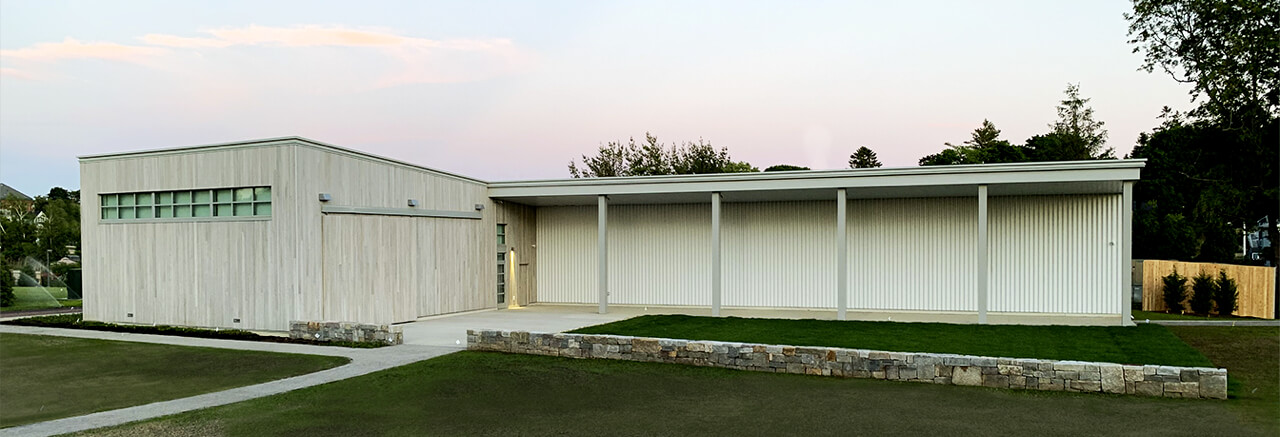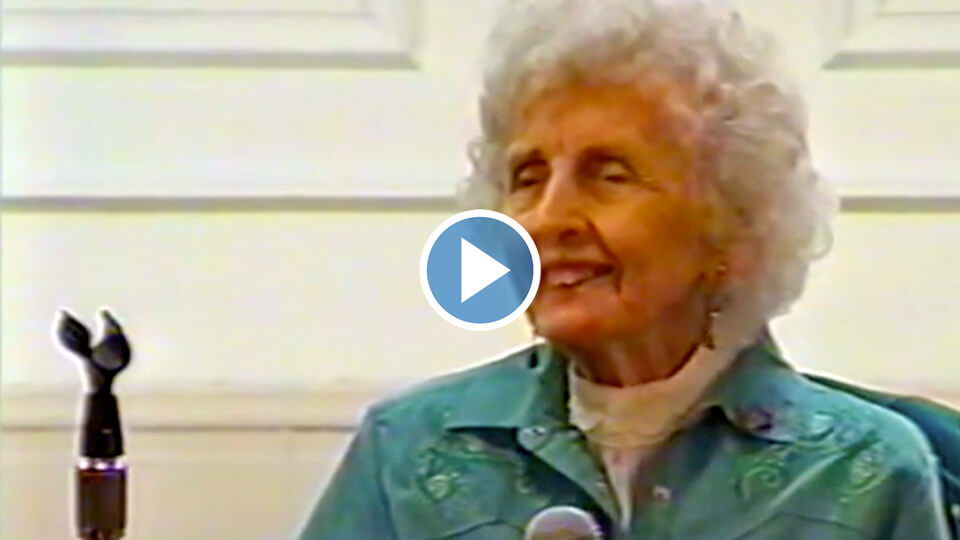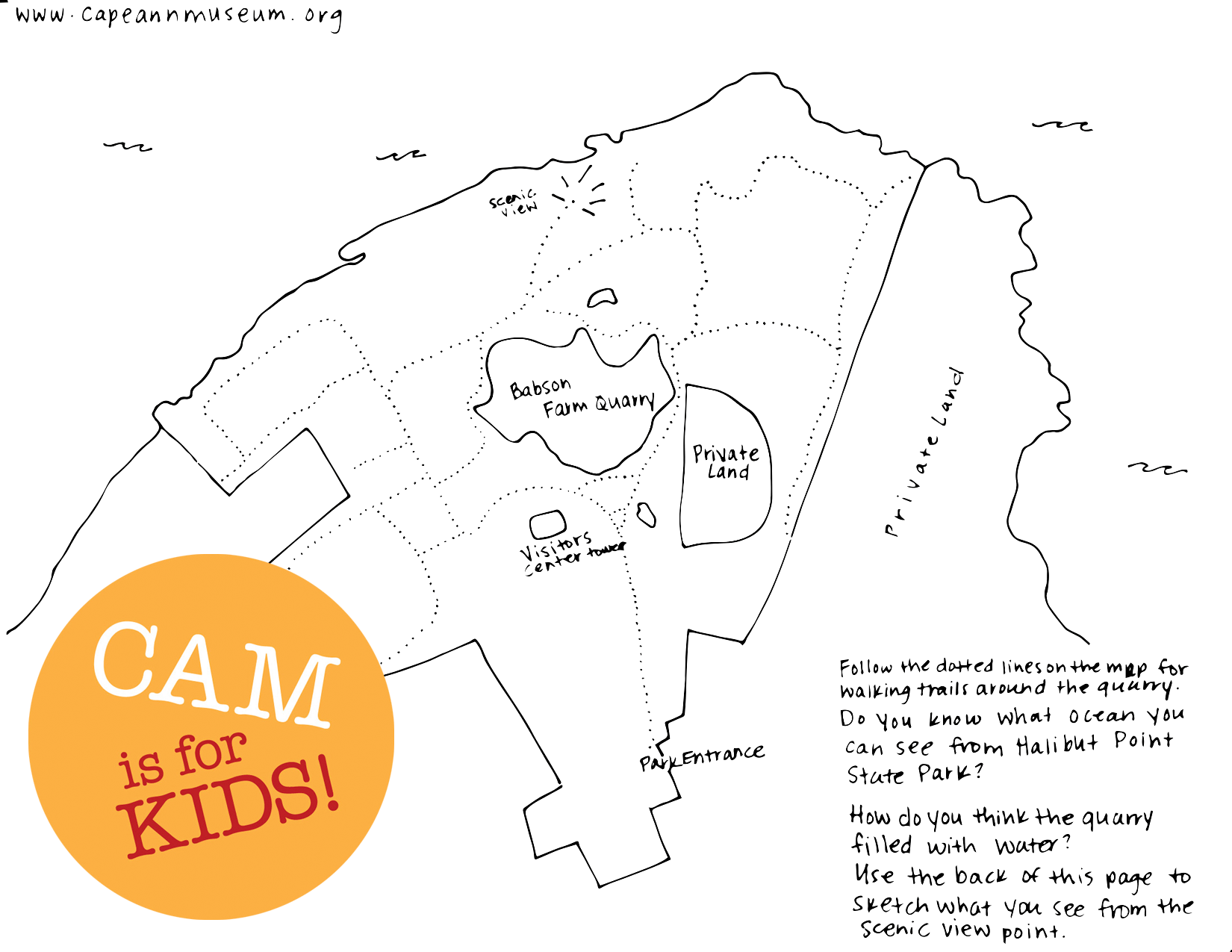
Leon Kroll (1884-1974), Babson Farm Quarry, Halibut Point, 1913. Oil on canvas. The James Collection, Promised Gift of Janet & William Ellery James to the Cape Ann Museum.
Granite Quarrying Industry
For 100 years, from the early 1830s through 1930, the granite quarrying industry was a crucial part of Cape Ann’s economy. First undertaken on a small scale with individuals opening up “motions” to harvest stone for their own projects, by the end of the 19th century, quarrying had grown into a big business, employing hundreds of men and boys (many of them immigrants from around the world), and keeping a fleet of vessels busy transporting stone up and down the Atlantic seaboard. While granite was taken from the earth in all different sizes and shapes, Cape Ann specialized in the conversion of that granite into paving blocks that were used to finish roads and streets.
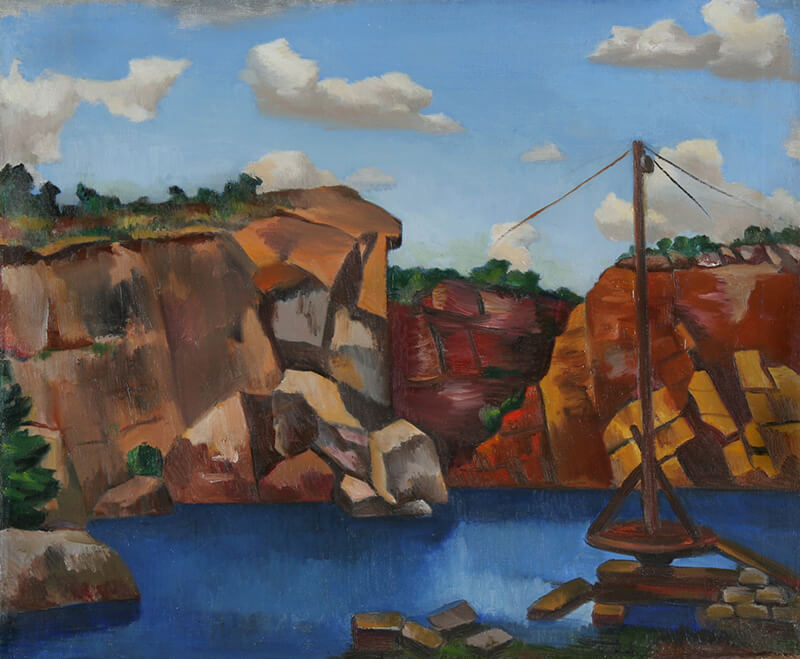
Jan Matulka (1890-1972), Rockport Quarry, ca. 1929. Oil on canvas. Collection of the Cape Ann Museum. Gift of the estate of the artist, 2006 [acc. # 2006.4.3]
Millions of blocks were shipped out of Cape Ann annually, destined for New York, Philadelphia and other American cities. During the summer of 1879 alone, the Rockport Granite Company shipped 60,000 paving blocks to Philadelphia and an additional 100,000 to New York City. While the granite industry would never reach the heights that the fishing industry did in terms of job creation, profits earned and markets met, quarrying made important and sustained contributions to the community and helped enrich the social fabric of the entire Cape. ■
Granite Walls at CAM Green
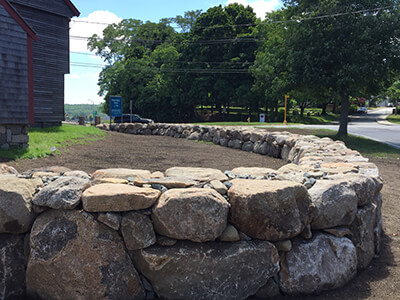
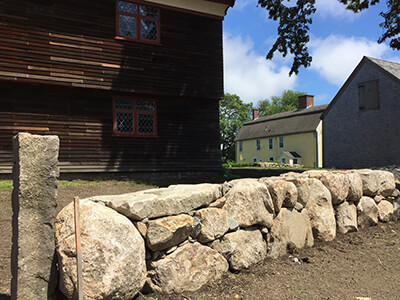


Building on Fitz Henry Lane's meticulous renditions of field stone walls at what is now the Cape Ann Museum Green, the Museum recently completed a 500 feet long, 5000 square foot wall along its Poplar Street and Washington Street boundaries. Utilizing stones original to this historic site, the wall was built by Peter Giordano, Sr., and a team of artisans and is an integral feature at CAM Green, framing the open green space as part of new landscaping at the campus. ■
The Stones of the Quarries
by Rob Apse
To learn more about Cape Ann granite, check out “The Stones of the Quarries” a short documentary from filmmaker Rob Apse.
The Finnish Effect
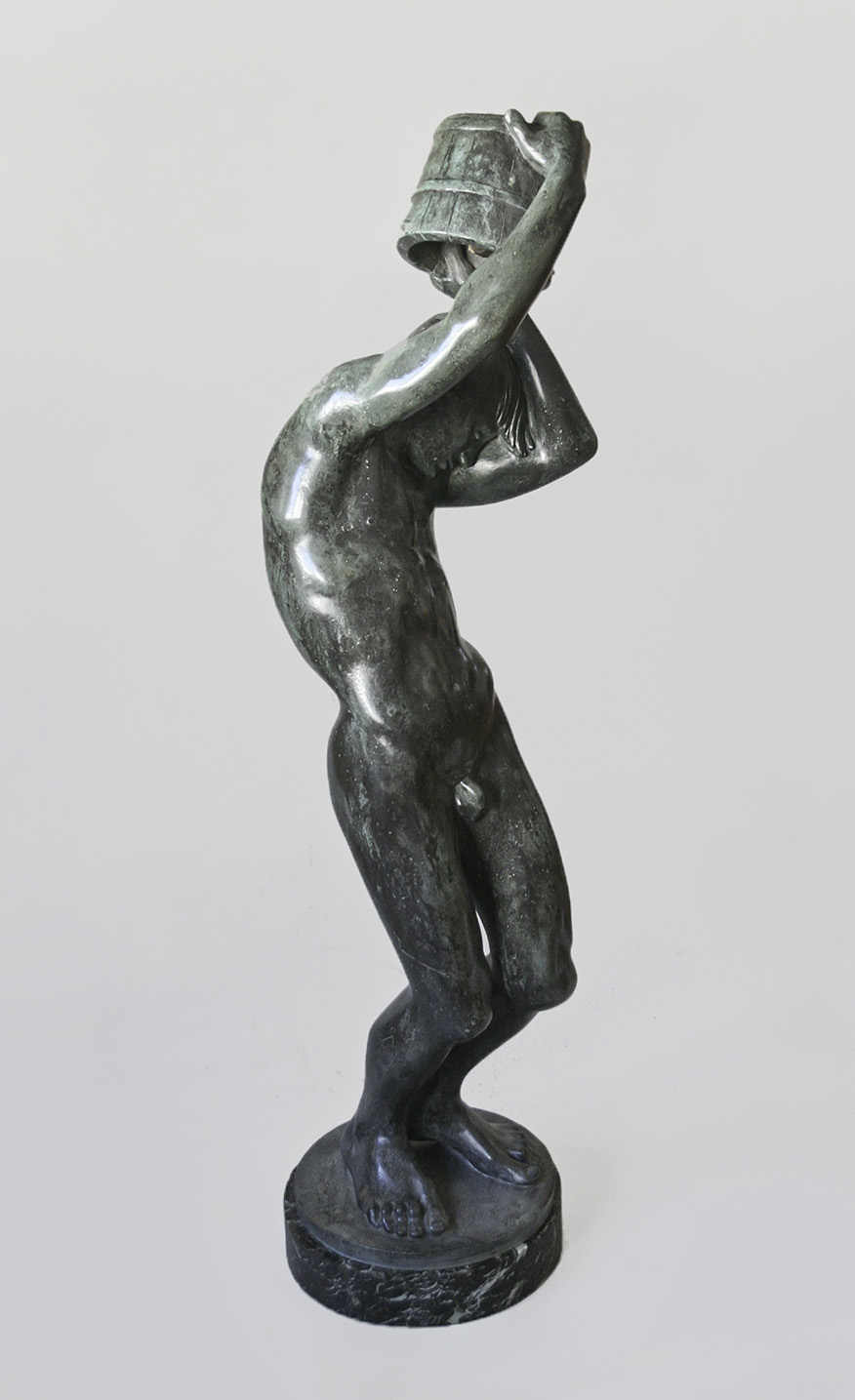
George Demetrios (1896–1974), Sauna, 1935, bronze, Gift of the estate of Constantine J. Maletskos, 2016 [acc. # 2016.16.1]. Collection of the Cape Ann Museum. ©Linehan Photography.
While Cape Ann is well known for its tradition of land and seascape painting, artists who pursued a different kind of subject matter also flourished here during the early 20th century. And the region’s granite quarrying industry may have helped their cause in an unexpected way.
A number of the nation’s finest painters and sculptors of the human figure once called Cape Ann home, including Paul Manship, Ellen Day Hale, Charles Grafly, Gabrielle deVeaux Clements, Walker Hancock, Leon Kroll and George Demetrios. Interestingly, many of these artists settled in the northern neighborhoods of Lanesville, Folly Cove and Pigeon Cove, drawn by the promise of a quiet studio at the outer extremity of Boston’s North Shore. But what else made these neighborhoods different? Interviewed in 1978, Leon Kroll’s wife Genevieve suggested that the local Finnish community, and their perception of nudity, may have played a role.
Granite Quarrying on Cape Ann
with Barbara Erkkila
For those who have visited the Granite Gallery on the Cape Ann Museum’s lower level, the extensive display of historical quarrying materials may already be a familiar favorite. But how many know about the person responsible for getting such a significant collection off the ground? Her name is Barbara Erkkila (1918-2013), a long-time Gloucester resident whose meticulous research over the years, astute artifact gathering, and generous donation of these resources to the Museum in the 1990s has helped the Museum tell the fascinating story of one of the most important industries in Cape Ann’s history.
This video captures a conversation with Erkkila at the Museum in 2007 that was moderated by Sinikka Nogelo in which Erkkila entertains the audience with stories from her childhood growing up in Lanesville and her long career as a feature writer and editor at the Gloucester Daily Times. Erkkila’s sparkling personality brings life to reminiscences about such varied topics as painting a kitchen with “wagon wheel blue,” ever-evolving methods of stone extraction, and the youthful joy of waving to the engineer on Polyphemus II, one of the trains that carted the cut granite from the quarries to nearby wharves where it was loaded on boats and then taken away to locations up and down the east coast.
In addition to her objects, the Cape Ann Museum Library is fortunate to have a significant collection of Erkkila’s quarry maps, photographs, and related ephemera, all of which are detailed in the Barbara Erkkila Papers finding aid, as well as a copy of her 1980 book, Hammers on Stone: The History of Cape Ann Granite. ■
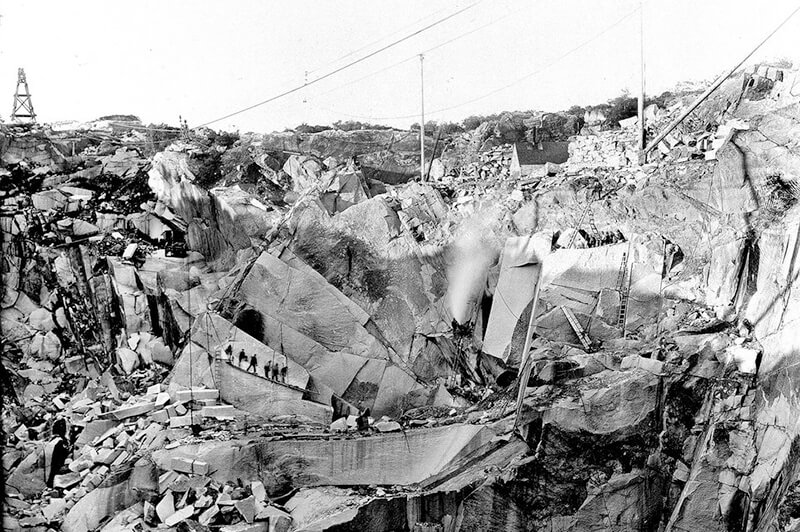
Pigeon Hill Granite Co., spring 1906. Photographer: C.B Graves. Gift of Barbara Erkkila, 1994 [acc. # 1994.76] The Barbara Erkkila Collection of the Cape Ann Museum Library & Archives.
The Cape Ann Museum is always committed to finding ways to improve the accessibility of our content. In particular, we have been hard at work transcribing all of the lectures found in the CAM Video Vault. While we're not there yet, we're getting closer by the day, thanks in large part to our dedicated volunteers.
We've begun the process of creating closed captions for these lectures so that viewers can read along with the text throughout the video. This video marks the commencement of this initiative, and we look forward to sharing more in the near future.
CAM Kids
Grab some sunscreen and your sunglasses and head to Halibut Point State Park for a quarry walk with the family! Explore The Babson Farm Quarry and all the history it holds by downloading CAM Kids Quarry Map and following the link here for a map created by Massachusetts State Forests and Parks Guide to Recreation.
For more information on visiting the park and COVID-19 guidelines, visit this page. ■
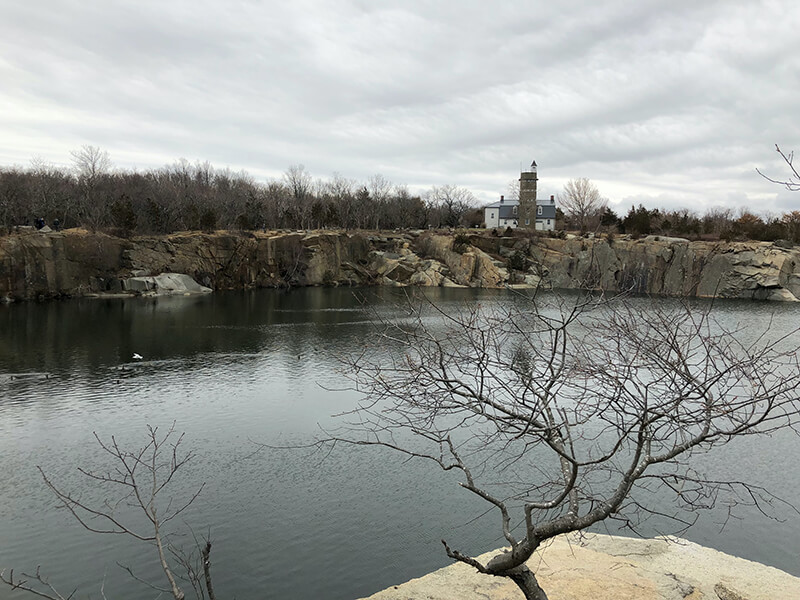
Unsubscribe | Forward | View in browser
CAPE ANN MUSEUM
27 Pleasant Street, Gloucester, MA 01930
Cape Ann is one of the most important places in the history of American art and industry.
The Cape Ann Museum, thanks to supporters like you, celebrates the history and remarkable contributions of this place to the cultural enhancement of our community and the world at large - yesterday, today and tomorro


